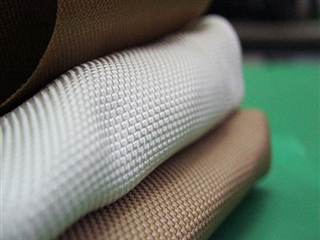COVID-19 Impact on Menstrual Health and Hygiene in Healthcare Industry
The coronavirus pandemic has generated an unpredictable effect on the human daily lives as well as on global economy. The coronavirus has a knockout effect on healthcare industries too and created a notable effect or burden on the already pinched healthcare systems across the world. As the pandemic increases day-by-day, the healthcare professionals overworked their duties to overcome the pandemic but continuous rising number of cases causes major problems. The global COVID-19 pandemic is impacting health and personal decision-making of people around the globe. In addition to this, most of the households stock-up on non-perishable goods, outside of toilet paper and processing and the people who menstruate have other issues.
There is no secret that intense stress such as moving from one home to another, work culture stress and personal stress can majorly mess with the women menstrual cycle. Recently, coronavirus pandemic qualifies as a major form of stress in females. In recent months, there is no surprise that many women facing menstrual disruption from longer cycle to skip period or change in the menstrual pattern. According to the MedPage Today publishing house, the disruption can be occurred if a woman become infected with the COVID-19 or she may deal with the prolonged stress during this pandemic. During this pandemic, many studies are going to identify the effect of coronavirus pandemic on women menstrual health.
For instance,
- Dr. Tara Shirazian (MD), director of Global Women’s Health and an assistant professor of obstetrics and gynecology at NYU Langone Health in New York City said that hormones have major role in women menstrual health. She said “if a woman gets COVID-19, it’s a stress on the body and a major stress on the hypothalamic pituitary adrenal (HPA) axis which is the body’s central stress response system”. Dr. Tara said during the time of stress hypothalamic pituitary adrenal axis stimulates the stress hormones known as cortisol to help the body prepare to fight and flight for the threat. As the stress increases, cortisol level will affect the menstrual cycles. Moreover, prolonged period stress, burn out the stress response system and hypothalamic pituitary adrenal (HPA) axis suppress which drives down the pituitary production of estrogen and progesterone.
- In the same context, Dr. Malhotra also said that the relationship between the novel coronavirus and menstruation affects the women health. The latest research showed that entry of coronavirus is facilitated into the body by the Ace 2 (angiotensin converting enzyme 2) receptors which are more upregulated in the sense that they increase in number with the male hormones namely testosterone. The number of Ace 2 receptors in a female body is much lower and that is presumed because of the hormone oestrogen which is there in our body. This hypothesis also becomes stronger because menopausal women are more prone to COVID-19. So, wherever the oestrogen level goes down, women are more vulnerable to this infection.
- Dr Rinku Sengupta, an obstetrician and gynecologist also gave statement on coronavirus effect on polycystic ovary syndrome (PCOS) and menstrual cramps. She said if COVID-19 has a causal effect on women suffering from polycystic ovary syndrome (PCOS), a hormonal disorder which is common among women of reproductive age causing enlarged ovaries with small cysts on the outer edges and other gynecological illnesses such as dislocated ovaries and how the infection can affect Indian women with obesity and menstrual irregularities. She also said it is difficult to say because “we still don’t have adequate data to determine the causal effect. Irregular periods can be associated with COVID-19 just as any other infection and if a woman already has PCOS, then obviously it can make it worse. But to typically find out that it is because of COVID-19, we need more long-term studies. The same goes for menstrual cramps. The virus can make cramps more excruciating but it is not definite for all women.”
According to the “Menstrual Health Alliance India (MHAI)” recent survey (during April), “with the production becoming constrained, availability of menstrual hygiene products including disposable and reusable sanitary pads at the last mile rural retail points was most affected.” Moreover, the ongoing lockdown to contain the coronavirus (COVID-19) pandemic is severely challenging women’s and girls’ access to menstrual hygiene products and toilets for managing menstruation, especially given the presence of male and older family and community members.
Closures of educational institutions and community groups have further worsened supply problems, with 62 percent of respondents showing that it has become difficult to access menstrual products through normal channels while 22 percent said they had no access at all. Due to restricted development, women in rural areas have been the most affected as accessibility at last-mile rural retail points has been affected. Consumers who have access to menstrual goods at the block or district level markets have also been impacted by the lack of public transport and accessibility limitations under the lockdown. Females and girls have been forced to switch from disposable pads to cloth pads due to a shortage of sanitary items.
According, to the Reproductive Health Supplies Coalition (RHSC), the manufacturing members are facing three major problems such as disrupted supply production, numerous interruptions in the supply chains and delayed or failed delivery of goods. Due to the increased social distance, the demand for the output of manufacturing plants, the decreased workforce in manufacturing facilities, the closing of factories and the fact that the production of personal protective equipment (PPE) has taken precedence for many small manufacturers are disrupted.
Supply chain interruptions are the result of grounded commercial flights due to the extended lock-down effect, many ports do not operate at maximum capacity and slots are redistributed to shipments of emergency equipment. The same disruption has been observed at the entry point of the country: in countries where imports have been / are limited, both menstrual items and raw materials for disposable pads are challenging. In certain countries, road transport restrictions have limited distribution, affecting distribution at the last mile as many distributors / retailers have stopped regular retail operations. Finally, when groceries and other stores are closed and distribution workers are locked down, food delivery is the most frequently delayed. Girls, who would otherwise receive menstrual health products at school today, in countries where sanitary napkins are subsidized by the government, do not because of school closures.
STRATEGIC INITIATIVES TAKEN BY THE GOVERNMENTS, NGOS, PHARMACEUTICAL INDUSTRIES AND OTHERS
Just 36 percent of India's 336 million menstruating women use sanitary napkins, according to the RISE INDIA NGO and with the COVID-19 crisis, the number has decreased rapidly. In this respect, RISE has raised a total of 975,677 INR to support poor women. The target value of 3,000,000 INR for the support of women was also set by the NGO.
In order to help customers and communities in need during these difficult times, P&G India launched its COVID-19 response and relief programme 'P&G Suraksha India'. The hindi word for 'protecting' is Suraksha. To help the menstrual health and hygiene needs of girls and women from migrant communities, shelter homes and underserved communities, P&G is also collaborating with government and relief agencies to donate more than a million sanitary pads and distribute thousands of food kits to those in need in migrant communities.
Asmita Yojana, an initiative led by R Vimala, IAS & CEO of the Maharashtra State Rural Livelihoods Mission (MSRLM) leverages the power of female SHGs to sell Asmita+, affordable sanitary napkins (proceeds held by SHGs). A pack of 8 sanitary napkins is given at a subsidized rate of Rs. 5 for adolescent girls from Zilla Parishad schools while women can purchase it for Rs. 24.
In Hubei Province in China, where 50 percent of doctors and 90 percent of nurses are women, donations of menstrual products were turned away by the (mostly males) managers because they were not considered "necessities." In order to suppress their cycles, women were reportedly taking contraceptive pills. Others, without any menstrual fabrics to contain or collect the flow, had no choice but to bleed on their protective suits. The Chinese authorities were led to reverse this by a social media uproar and menstrual materials subsequently became part of the government's vital medical supplies to hospitals for both patients and care providers.
FIGURE 1: IMPACT OF COVID-19 ON WOMEN HEALTH AND HYGIENE
 Table 1: CHALLENGES FOR MENSTRUATORS DURING THE COVID-19 PANDEMIC AND CONSIDERATIONS FOR MITIGATING IMPACTS
Table 1: CHALLENGES FOR MENSTRUATORS DURING THE COVID-19 PANDEMIC AND CONSIDERATIONS FOR MITIGATING IMPACTS
|
S. NO.
|
CHALLENGES
|
MEASURES TO CONSIDER
|
-
|
Girls and women hospitalized or in quarantine centres for COVID-19 may lack access to WASH and MHH supplies
|
- Provide menstrual materials and painkillers at HCF and quarantine centers
- Support WASH in HCF for patient access to facilities for menstrual hygiene
|
-
|
Girls and women with confirmed or suspected COVID-19 quarantined or isolated at home may lack access to piped water supply, on-site sanitation, handwashing facilities, soap and MHH supplies
|
- Support continuity of WASH services in the home when possible or regular deliveries of essential WASH supplies
- Consider separate shared facilities for girls and women with COVID-19 and those without COVID-19
|
|
3.
|
Disrupted access to menstrual hygiene materials and particularly disposable menstrual hygiene materials that require monthly replenishment
|
- Ensure that sanitary pads are deemed essential commodities, removing barriers to manufacturing and supply
- Where washing is possible, consider promoting reusable materials as an alternative such as a menstrual cup, washable pads or absorbent
|
|
4.
|
Reliance on shared water supply, on-site sanitation or household bathing
and laundry facilities
|
- Provide gender-separated laundry facilities with sufficient water, soap, drying space and drainage
- Where possible, consider adding additional facilities and dedicating certain facilities to girls and women with confirmed cases
|
CONCLUSION
It is important to bear in mind that there were many problems before the COVID-19 crisis, especially the difficulty of obtaining menstrual products in rural areas. But these pre-existing problems have been compounded by the crisis. In addition, the current situation and particularly the lockdown steps has tremendous economic consequences and financial stress may lead families to prioritize other needs over buying menstrual health supplies such as food or critical utility bills.







